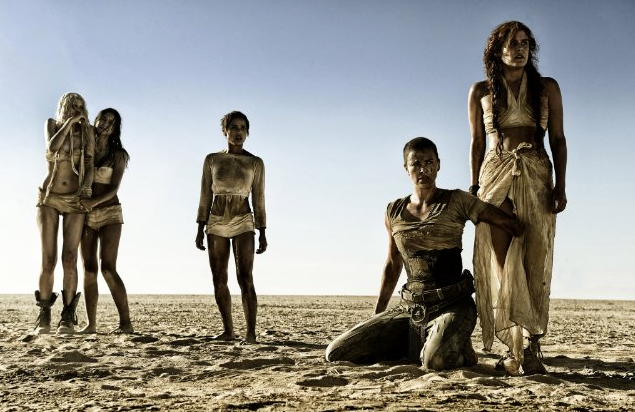Peter Suderman Reviews Mad Max: Fury Road

Like Kurt Loder, I liked the new Mad Max quite a bit:
In the decades since they first hit theaters, the original "Mad Max" and its follow-ups "The Road Warrior" and "Mad Max Beyond Thunderdome" have become so influential that it's easy to forget that they were little more than Australian exploitation films. They were short, brutal, cheaply made and designed primarily to provide viewers with quick, sadistic thrills.
But they worked because of Mel Gibson, and because of the diabolical genius of creator George Miller, who masterminded not only some of the most memorable vehicle stunts in movie history, but an entire weird world in which to stage them.
"Mad Max: Fury Road" is Mr. Miller's first foray into the series in 30 years, and although it is bigger and more ambitious in every way than any of its predecessors, it is still essentially an "Ozploitation" film: a crazy, grotesque, twisted, grungy and unabashedly violent action picture made by an individual with a strange and singular vision — one that just happens to have a $150 million budget behind it.
In other words, it is still fundamentally a "Mad Max" movie, just more so. This is precisely what makes it so glorious.
Read the complete review in The Washington Times.
Interesting facts about the movie's production: The idea for the film started as a series of 3500 storyboards rather than a script—Miller's idea was to make a movie that could be understood by anyone, regardless of whether they spoke the language—and it looks like it. The narrative is in the shots and sequences much more than it's in the words.
Also: Miller brought in playwright Eve Ensler, who wrote The Vagina Monologues, as a consultant to work with some of the women in the film who play warlord Immortan Joe's liberated wives. It's hard to say how much direct influence Ensler ended up having, but the final film is, fascinatingly, one of the most overtly feminist big-budget action movies I've ever seen.
I think that's particularly true in the way it handles its two leads, Max and Furiosa. In theory, Max is the movie's protagonist, but he's semi-sidelined for much of the film. For the first quarter, he's literally just brought along for the ride, tied to the hood of a car as a blood bag for one of Joe's goons, and all the way through to the end, it's Furiosa whose goals and decisions drive the the story. Max really just exists to aid her journey and provide an idea that helps get the third act going. Basically, he's the B-plot, which is usually reserved for a token female love interest.


Show Comments (22)